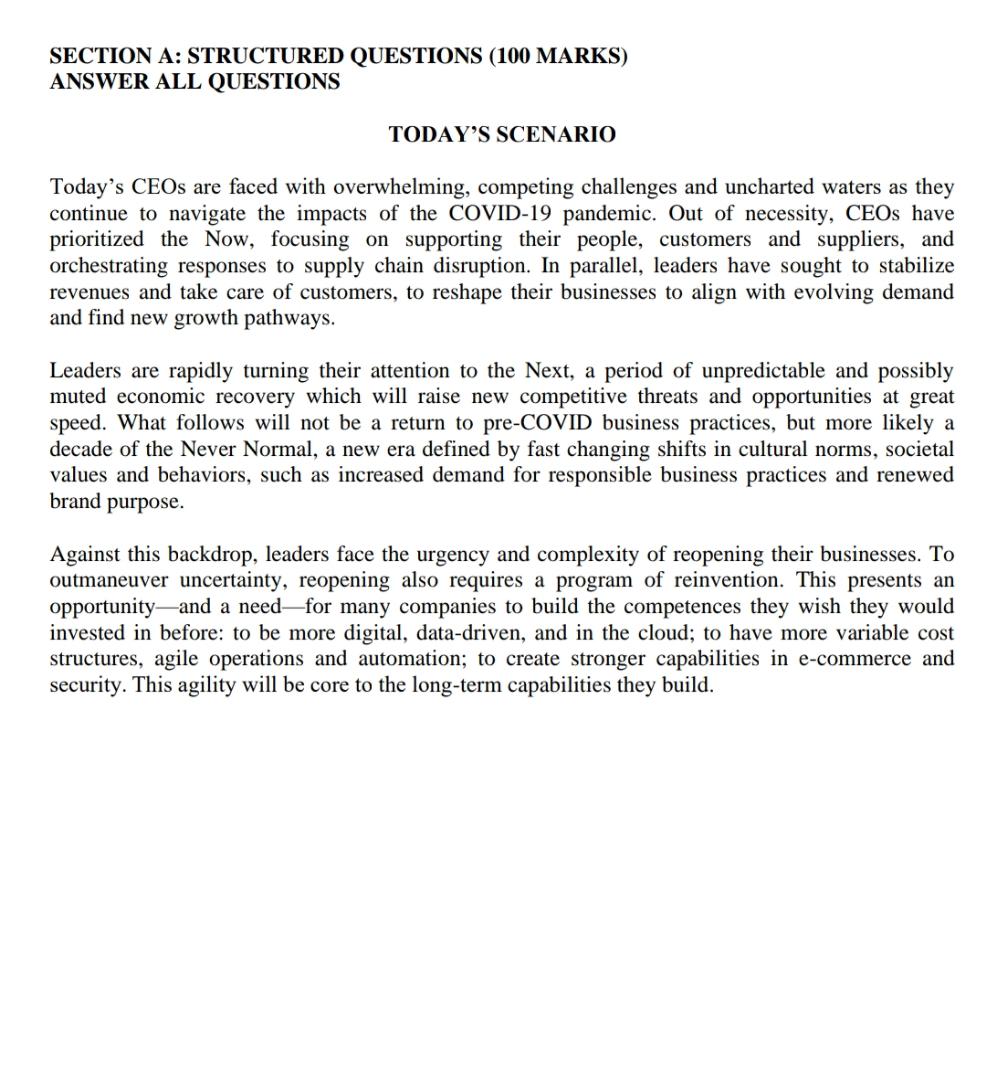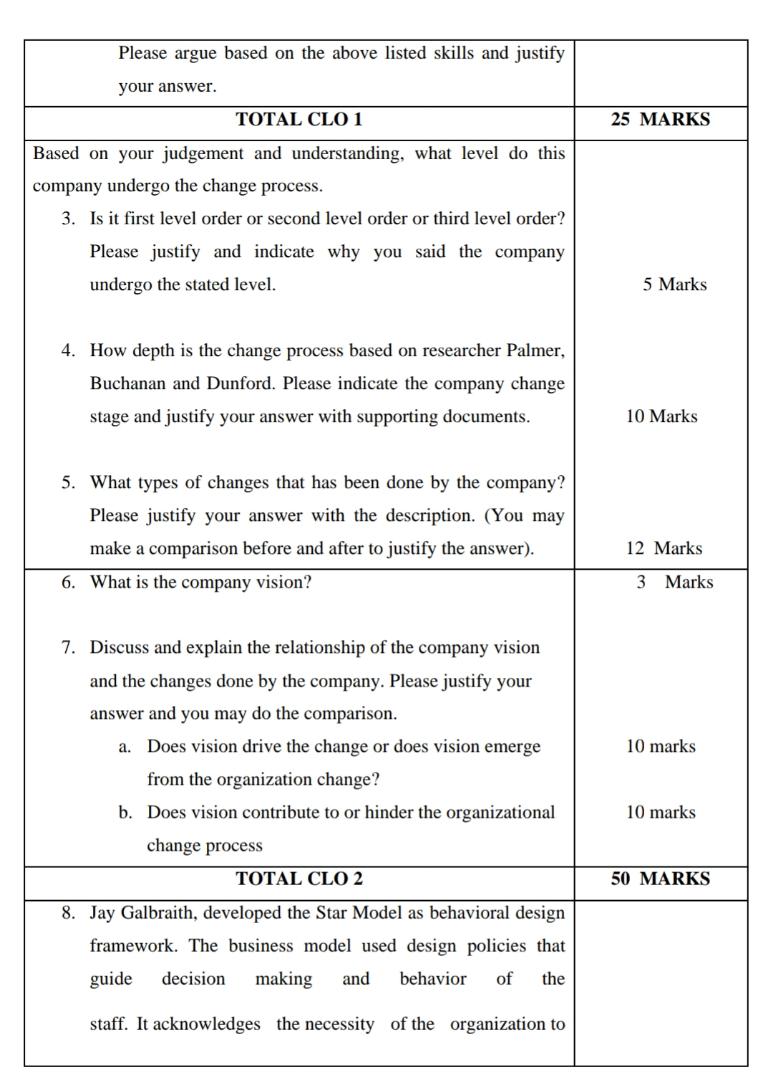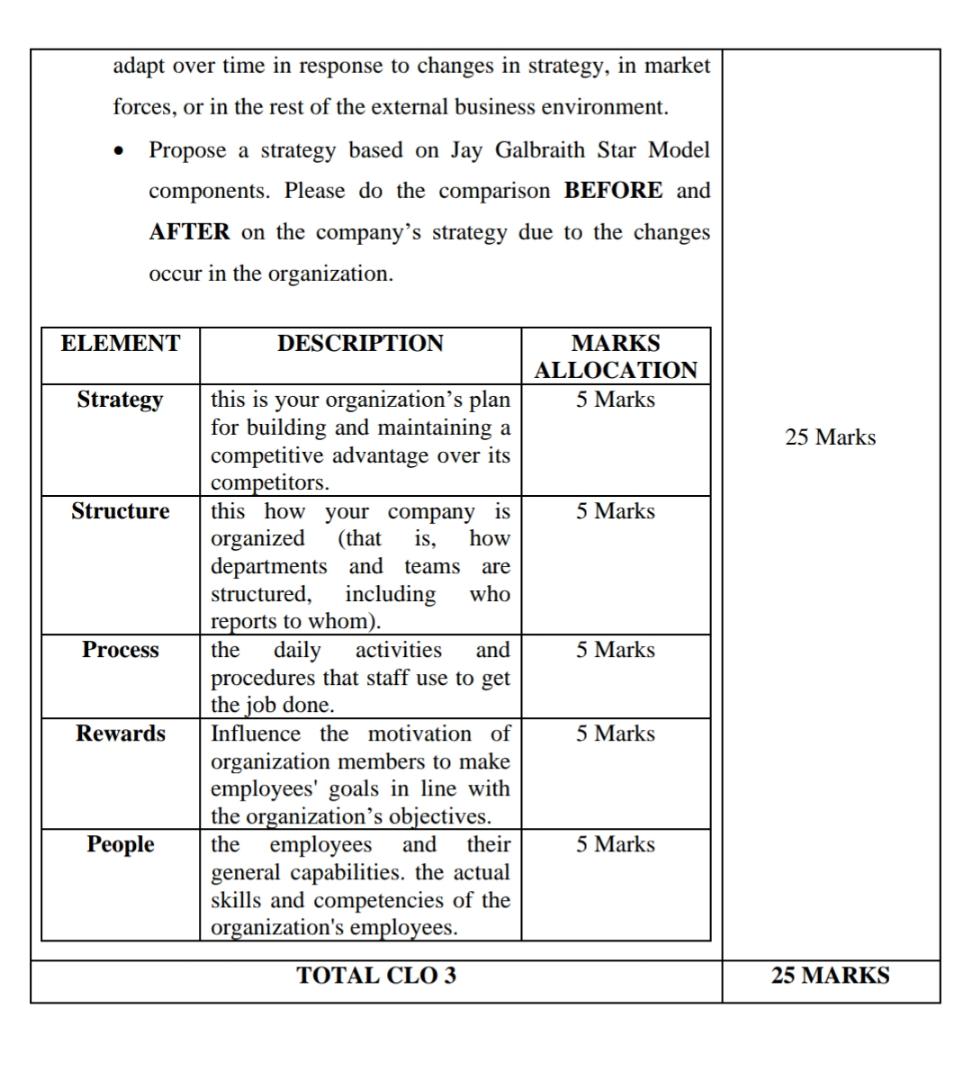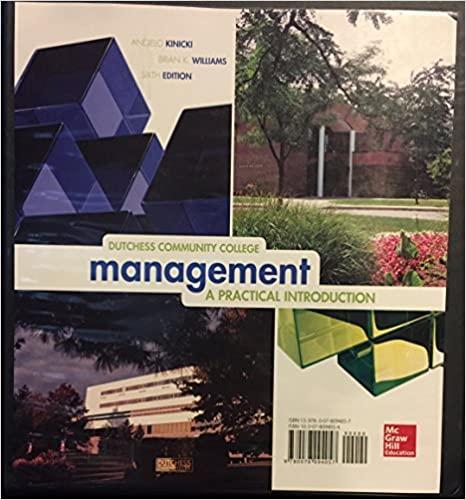Question
ANSWER ALL QUESTIONS TODAY'S SCENARIO Today's CEOs are faced with overwhelming, competing challenges and uncharted waters as they continue to navigate the impacts of the
ANSWER ALL QUESTIONS
TODAY'S SCENARIO
Today's CEOs are faced with overwhelming, competing challenges and uncharted waters as they continue to navigate the impacts of the COVID-19 pandemic. Out of necessity, CEOs have prioritized the Now, focusing on supporting their people, customers and suppliers, and orchestrating responses to supply chain disruption. In parallel, leaders have sought to stabilize revenues and take care of customers, to reshape their businesses to align with evolving demand and find new growth pathways.
Leaders are rapidly turning their attention to the Next, a period of unpredictable and possibly muted economic recovery which will raise new competitive threats and opportunities at great speed. What follows will not be a return to pre-COVID business practices, but more likely a decade of the Never Normal, a new era defined by fast changing shifts in cultural norms, societal values and behaviors, such as increased demand for responsible business practices and renewed brand purpose.
Against this backdrop, leaders face the urgency and complexity of reopening their businesses. To outmaneuver uncertainty, reopening also requires a program of reinvention. This presents an opportunity?and a need?for many companies to build the competences they wish they would invested in before: to be more digital, data-driven, and in the cloud; to have more variable cost structures, agile operations and automation; to create stronger capabilities in e-commerce and security.?This agility will be core to the long-term capabilities they build.
Malaysia Airlines Berhad and answer the following questions based on the organization to achieve the above course learning outcome. The scenario given is the overview of the organization facing due to COVID 19 pandemic and the leader should consider the steps they take to reopen as the first in a long journey of wider transformation.
Answer the question.
CLO 1 ( 25 marks )
1. Malaysia Airlines Berhad background / history / address / organizational structure. What type of service Malaysia Airlines Berhad offer?
Please attach relevant photos/chart/diagram in this section. (Indicate peer evaluation - 5 Marks) ( 10 marks )
2. a. Who is the owner of Malaysia Airlines Berhad ?
Please elaborate the background of the owner. Please provide the photos or and information about the owner. ( 3 marks )
b. Based on the owner background, do the background relevant with the Cumming and Worley arguments? They argued that OD practitioners needs a variety of skills including:
i. Intrapersonal Skills
ii. Interpersonal Skills
iii. General consultation Skills
iv. Organization Development Skills
Please argue based on the above listed skills and justify your answer. ( 12 marks )
CLO 2 ( 50 marks )
Based on your judgement and understanding, what level Malaysia Airlines Berhad undergo the change process.
3. Is it first level order or second level order or third level order?
Please justify and indicate why you said Malaysia Airlines Berhad undergo the stated level. ( 5 marks )
4. How depth is the change process based on researcher Palmer, Buchanan and Dunford.
Please indicate Malaysia Airlines Berhad change stage and justify the answer with supporting documents. ( 10 marks )
5. What types of changes that has been done by Malaysia Airlines Berhad ?
Please justify your answer with the description. (You may make a comparison before and after to justify the answer). ( 12 marks )
6. What is Malaysia Airlines Berhad vision? ( 3 marks )
7. Discuss and explain the relationship of Malaysia Airlines Berhad vision and the changes done by the organization.
Please justify your answer and you may do the comparison.
a. Does vision drive the change or does vision emerge from Malaysia Airlines Berhad change? ( 10 marks )
b. Does vision contribute to or hinder the organizational change process? ( 10 marks )
8. Jay Galbraith, developed the Star Model as behavioral design framework. The business model used design policies that guide decision making and behavior of the staff. It acknowledges the necessity of the organization toadapt over time in response to changes in strategy, in market forces, or in the rest of the external business environment.
? Propose a strategy based on Jay Galbraith Star Model components. Please do the comparison BEFORE and AFTER on Malaysia Airlines Berhad's strategy due to the changes occur in the organization.
ELEMENT DESCRIPTION MARKS ALLOCATION
1) Strategy this is your organization's plan for building and maintaining a competitive advantage over its competitors. 5 Marks
2) Structure this how your company is organized (that is, how departments and teams are structured, including who reports to whom). 5 Marks
3) Process the daily activities and procedures that staff use to get the job done. 5 Marks
4) Rewards Influence the motivation of organization members to make employees' goals in line with the organization's objectives. 5 Marks
5) People the employees and their general capabilities. the actual skills and competencies of the organization's employees. 5 Marks




Step by Step Solution
There are 3 Steps involved in it
Step: 1

Get Instant Access to Expert-Tailored Solutions
See step-by-step solutions with expert insights and AI powered tools for academic success
Step: 2

Step: 3

Ace Your Homework with AI
Get the answers you need in no time with our AI-driven, step-by-step assistance
Get Started


